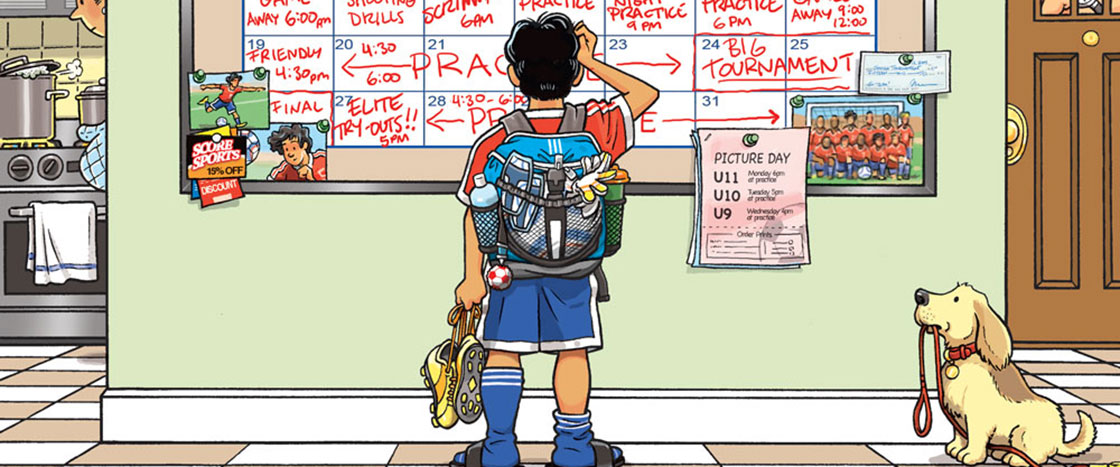In addition to travel sports, many other after-school activities require large time commitments. If any of your students are struggling with time-management skills, take a look at this Scholastic guide. It offers a variety tools to help students budget their time in and out of the classroom.

Are Travel Sports Out of Control?
Travel teams are super competitive and let you focus on your favorite sport. But some people say that’s exactly why they’re a bad idea.
Standards
More About the Story
Skills
Main ideas and supporting evidence, opinion writing
Complexity Factors
Purpose
The debate presents pros and cons of travel teams.
Structure
The text consists of an introduction followed by two sections, one discussing the benefits of travel teams and one discussing the drawbacks.
Language
The language is mainly conversational but includes the somewhat challenging word elite, as well as some wordplay.
Knowledge Demands
Some understanding of the different kinds of leagues available to young athletes will be helpful.
1. Preparing to Read
Have students preview the text features. Ask:
- What is the topic of the debate? (Prompt students to use the debate title and the heading on the chart as clues.)
- What do you think are the two sides of the issue?
2. Reading the Debate
Read the debate as a class or in small groups.
Have students read the debate a second time. Prompt them to mark the types of support the author presents to back up each side, including:
- Facts and statistics (F/S)
- Quotes from experts (Q)
- Stories or examples (EX)
3. Discussing
As a class or in groups, have students discuss:
- Which evidence is most effective in supporting each side?
- Is one side stronger than the other? Why?
- What is your opinion? What evidence do you find the most convincing?
- For more-advanced students: Do you think the author has a preferred point of view on this issue? What is your evidence?
4. Writing
Have students complete the chart in the magazine.
Distribute the activity “Write an Opinion Essay.” The lower-level version guides students to write a three-paragraph essay on the debate topic. The higher-level version prompts them to bring in additional evidence and write six paragraphs, including a rebuttal of the other side. With either version, hand out our Opinion Writing Toolkit, which offers writing tips and transition words.
